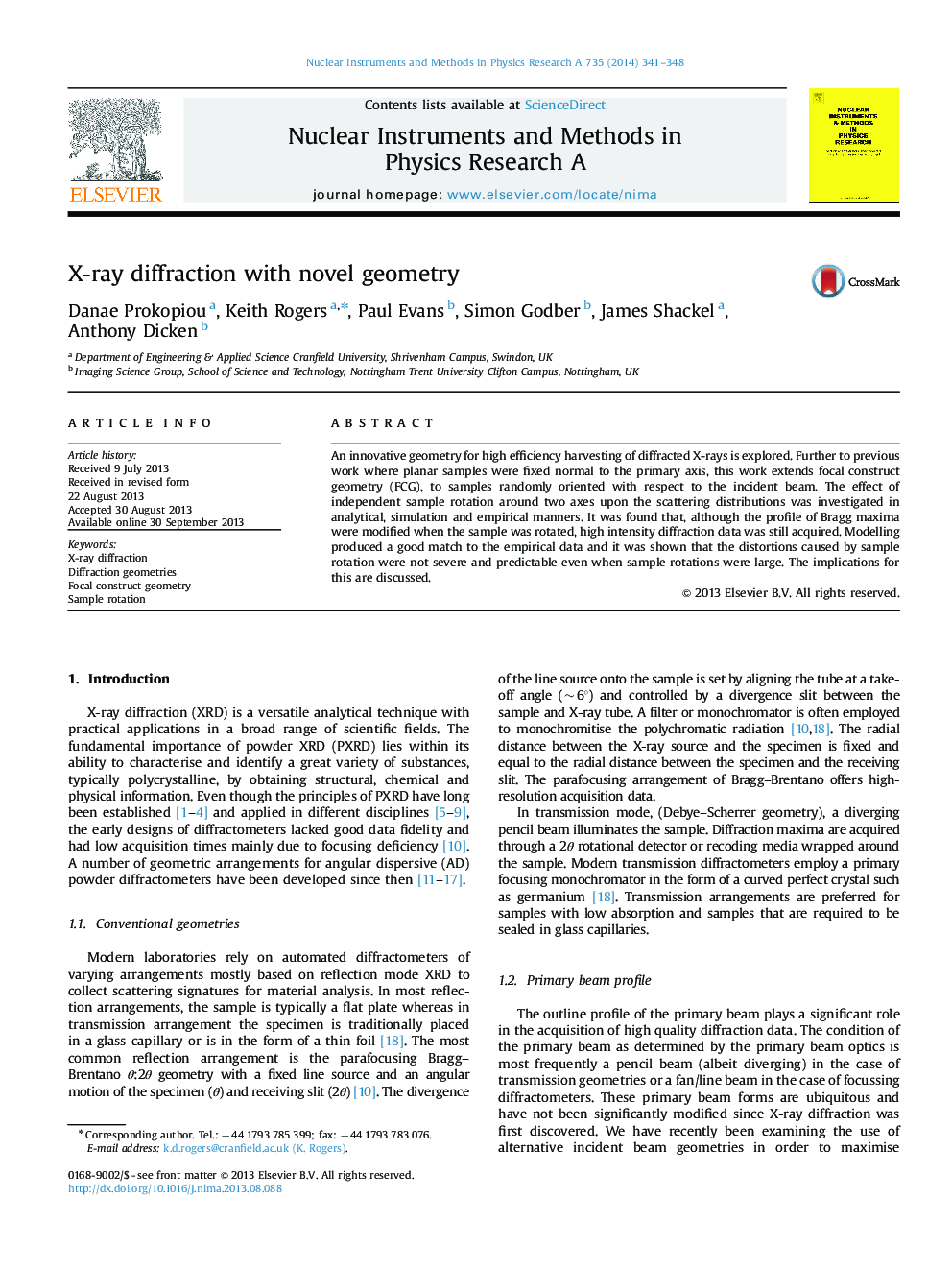| Article ID | Journal | Published Year | Pages | File Type |
|---|---|---|---|---|
| 8178405 | Nuclear Instruments and Methods in Physics Research Section A: Accelerators, Spectrometers, Detectors and Associated Equipment | 2014 | 8 Pages |
Abstract
An innovative geometry for high efficiency harvesting of diffracted X-rays is explored. Further to previous work where planar samples were fixed normal to the primary axis, this work extends focal construct geometry (FCG), to samples randomly oriented with respect to the incident beam. The effect of independent sample rotation around two axes upon the scattering distributions was investigated in analytical, simulation and empirical manners. It was found that, although the profile of Bragg maxima were modified when the sample was rotated, high intensity diffraction data was still acquired. Modelling produced a good match to the empirical data and it was shown that the distortions caused by sample rotation were not severe and predictable even when sample rotations were large. The implications for this are discussed.
Keywords
Related Topics
Physical Sciences and Engineering
Physics and Astronomy
Instrumentation
Authors
Danae Prokopiou, Keith Rogers, Paul Evans, Simon Godber, James Shackel, Anthony Dicken,
